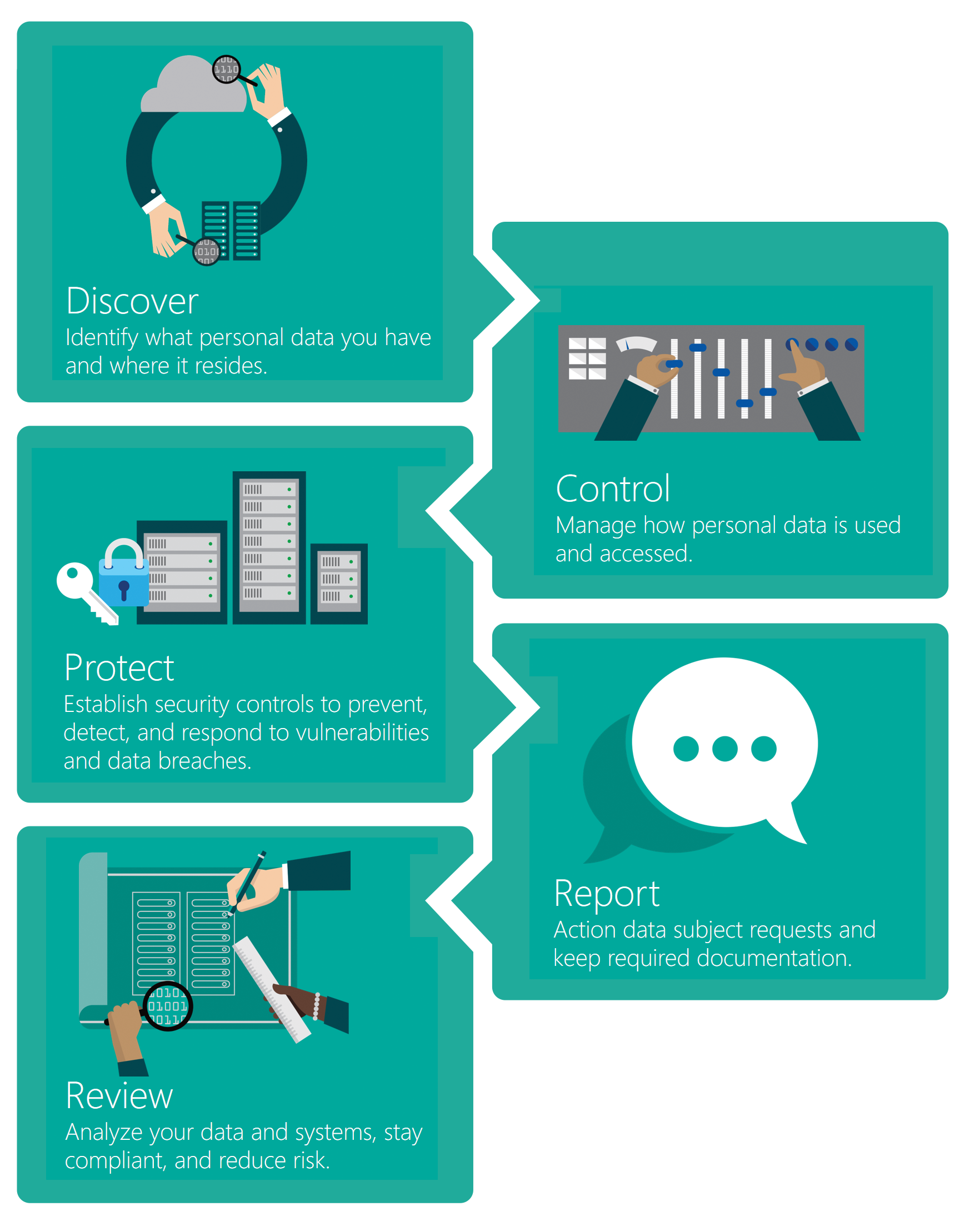Are you wondering or worrying about the General Data Protection Regulation (GDPR) that is coming into force in May 2018?
…So are we as an International business working primarily with Microsoft to implement Cloud Computing solutions, whether Dynamics 365 or Azure. Therefore we thought it would be helpful to share some useful resources that we are tracking with you, our clients.
Original source: https://www.microsoft.com/en-us/trustcenter/privacy/gdpr
Preparing for a new era in privacy regulation
In May 2018, a European privacy law is due to take effect that will require big changes, and potentially significant investments, by organizations all over the world—including Microsoft and our customers.
Known as the General Data Protection Regulation (GDPR), the law imposes new rules on companies, government agencies, non-profits, and other organizations that offer goods and services to people in the European Union (EU), or that collect and analyze data tied to EU residents. The GDPR applies no matter where you are located.
Prosperity agree with Microsoft when they state “GDPR represents an important step forward for individual privacy rights. It gives EU residents more control over their “personal data” (which is precisely defined by the GDPR). The GDPR also seeks to ensure personal data is protected no matter where it is sent, processed, or stored”.
Fundamentally, the law updates European privacy regulations for the first time in more than two decades, bringing them more in line with the current technologies which we, as modern businesses, leverage today.
The GDPR is a complex regulation that may require vast changes in how you gather and manage data. Thankfully, Microsoft has a long history of helping customers comply with complex regulations.
When it comes to preparing for the GDPR, Microsoft are striving to help by outlining five key steps to compliance:

The GDPR contains many requirements about how you collect, store and use personal information. This means not only how you identify and secure the personal data in your systems, but also how you accommodate new transparency requirements, how you detect and report personal data breaches, and how you train privacy personnel and employees.
Given how much is involved, you should not wait until the regulation takes effect in May 2018 to prepare. You need to begin reviewing your privacy and data management practices now. Failure to comply with the GDPR could prove costly, as companies that do not meet the requirements and obligations could face substantial fines and reputational harm.
For further information and guidance from Microsoft regarding GDPR, Compliance and Microsoft’s investment, in general, in helping us to help you to remain compliant and secure your data, please review their ‘Trust Centre’ for more information.





